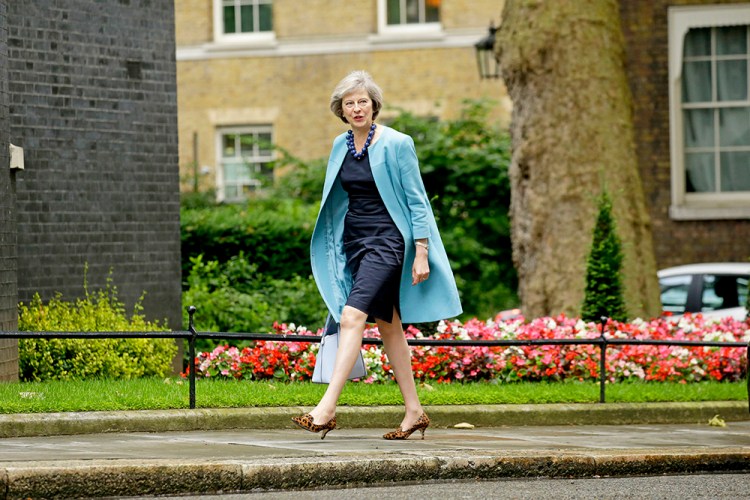LONDON — British politics is filled with uncertainties these days, but this we know: There is just one person standing in the contest for 10 Downing St.
Theresa May appeared to have the prime minister post in her grasp Monday after the only other candidate on the list, Energy Minster Andrea Leadsom, stepped aside and endorsed her former rival.
Here’s a brief profile of May:
May is serious and cautious – some in Germany have likened her to Chancellor Angela Merkel – and says that a vote to leave the European Union means exactly that.
“Brexit means Brexit,” May said on Monday morning in a campaign speech in the race to become the second female British prime minister after Margaret Thatcher.
“We are going to make a success of it,” she told supporters in Birmingham. “There will be no attempts to remain inside the EU.”
May has argued that she is the one to unify the country after Prime Minister David Cameron announced his resignation when his pro-EU side lost in last month’s referendum.
“My pitch is simple: I’m Theresa May, and I think I’m the best person to be prime minister,” she has said.
She also surprised commentators on Monday by proposing ideas normally associated with the left-leaners in British politics, including having workers on the boards of major companies.
“This is a different kind of conservatism, I know. It marks a break with the past, but it is in fact completely consistent with conservative principles. Because we don’t just believe in markets, but in communities. We don’t just believe in individualism, but in society. We don’t hate the state, we value the role that only the state can play.”
She has ruled out a second referendum, as well as a general election before 2020. She also said that under her leadership, Britain would not apply to leave the EU before the end of the year.
“I’m not a showy politician. I don’t tour the television studios. I don’t gossip over lunch. I don’t drink in Parliament’s bars. I don’t wear my heart on my sleeve. I just get on with the job in front of me,” she has said.
May is Britain’s long-serving home secretary, a portfolio under which she oversees the vexing issue of immigration. She is praised by some in her party for taking a tough stance on immigration and for introducing visa restrictions on non-EU immigrants in an attempt to drive down net migration. For instance, as of April, Americans and other non-Europeans living in Britain for more than five years have to earn 35,000 pounds, or about $47,000, if they want to stay.
She is also reviled by some on the left. Her critics were outraged over a speech she gave last year to the Conservative Party in which she suggested that immigration makes Britain a less cohesive society.
“When immigration is too high, when the pace of change is too fast, it’s impossible to build a cohesive society,” she said.
Her critics have accused her of using EU nationals as “bargaining chips” in the talks to come with the European Union. She has implied that it would be wrong to give guarantees without getting similar ones for Britons living in the European Union.
She once famously said that many voters saw the Conservative Party as the “nasty party.” When she launched her leadership bid, she praised Cameron for helping to detoxify the image of the party.
But while she was mostly full of praise for Cameron, she did say that she wouldn’t sign up for the current government’s plan to turn the budget deficit into a surplus by 2020. She said it was “vital” to continue along a similar path, but she added, “We should no longer seek to produce a budget surplus by the end of the Parliament.”
The 59-year-old is the daughter of a Church of England clergyman and says that public service is “part of who I am.”
Copy the Story LinkSend questions/comments to the editors.



Success. Please wait for the page to reload. If the page does not reload within 5 seconds, please refresh the page.
Enter your email and password to access comments.
Hi, to comment on stories you must . This profile is in addition to your subscription and website login.
Already have a commenting profile? .
Invalid username/password.
Please check your email to confirm and complete your registration.
Only subscribers are eligible to post comments. Please subscribe or login first for digital access. Here’s why.
Use the form below to reset your password. When you've submitted your account email, we will send an email with a reset code.